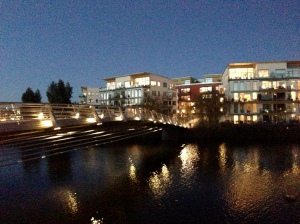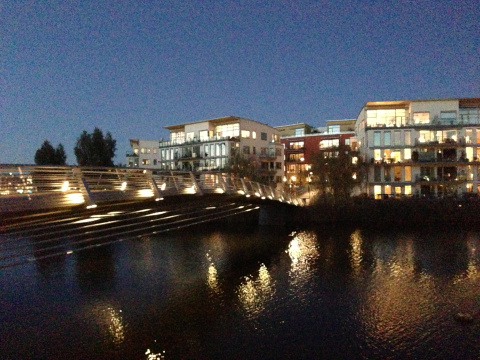The development industry in Norway and Sweden is not as hesitant as we are to try something new. In the UK we talk a lot about sustainable urbanism but developers are slow to act. The expertise exists in the architecture and design profession but there is a reticence from developers to change the way they work. It’s not just about cost, though many are quick to point to viability as the reason why we can’t achieve true sustainable development. In Scandinavia there is real interest in trying out a tool like BREEAM Communities*.

It would be easy to make unfair comparisons between the UK and Scandinavian countries about sustainability that don’t tell the full story. Yes, the Scandinavians are good at design. And they have the iconic sustainable community projects to prove it, like Hammarby in Stockholm. But they have the same difficulties that we have when it comes to masterplanning; and they are very willing to try a new approach (even though it is from the UK) to overcome these.I was speaking at event in Stockholm last autumn and my hosts introduced my session by reassuring the audience that I wasn’t advocating British building design as a part of the BREEAM Communities framework. This was met with unashamed laughter at the hilarity of the idea.
So what are these difficulties with masterplanning that the Nordic countries are looking to a British design standard to solve?
Stakeholder engagement: Big developments are contentious. Local communities around the world have a tendency to be opposed to new development. As a result, local politicians put barriers in place. Yet most politicians recognise when their community needs jobs, houses, new industry or infrastructure. They are willing to work with developers to make this happen in a way that suits their community’s needs. Increasingly, they are looking to bring about these benefits through high-quality development that is designed to best practice standards for social, economic and environmental aims. But achieving this is not easy. In Norway and Sweden, the developers and local authorities have found that BREEAM Communities is a tool to negotiate and focus discussions with each other and with communities.
Complexity and silo-working: Masterplanning projects are complex and involve a range of professionals who are often working in silos. This is a problem in any country and it is naturally reinforced by specialisms that continue to see their own field as the most important. In reality, each specialist area is important, but it has to be considered within the constraints and opportunities on the individual project. BREEAM Communities is a common framework that professionals can use to guide their work and ensure it is properly considered in other design decisions, where appropriate. I have to say that whenever I speak to consultants (in the UK and abroad) about BREEAM Communities they are very positive about its potential. They are often the professionals that gain training in the scheme and seek to use it as a way to gain business. They seem to have an easier job of that here in the Scandinavian countries as the developers are clearly taking a punt (we are currently working on 5 large developments across Norway, Sweden and Finland).
Managing risk: Everybody recognises that large developments are risky. Local authorities, developers, architects, etc. invest a lot of resources at the front end of a project when there is no guarantee that shovels will ever hit the dirt. Years of work can be carried out on expensive studies that are then re-worked when circumstances change. To a certain extent, masterplanning will always be an iterative process. That’s just the nature of planning anything. You start off working with a concept and start to gather experience and information as you go. This knowledge informs your next stage of the plan. But when big money is at stake, we want to try and minimise the risk of re-working plans and starting over from scratch. In the event today, people in the audience were saying that BREEAM Communities can help avoid this by making sure everybody starts off with a common and structured set of goals. By working to a common framework we can build consensus and help to smooth the planning process as much as possible.
I was reassured by today’s meeting in Oslo but I was also slightly disappointed that more developers in the UK aren’t willing to give BREEAM Communities a try. Early experience from Scandinavia is that it can save time and money. For any developer these should be the magic words.
*I started working as the BREEAM Communities Manager in October 2011. My remit was to comprehensively review the existing scheme and recommend an update that would better meet the needs of the market. The result was BREEAM Communities 2012, launched in October. So far the uptake and enthusiasm has been fantastic. www.breeam.org/communities

